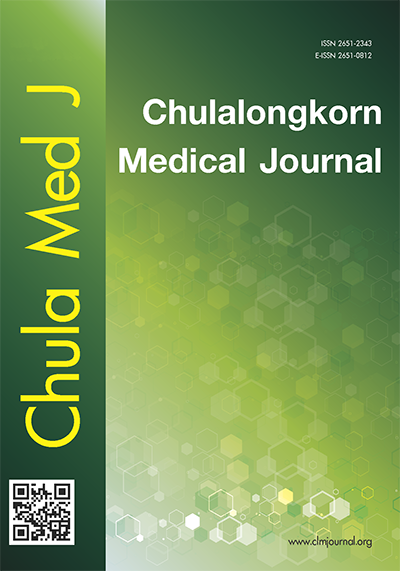The incidents of complications from central line placement in pediatric patient under general anesthesia.
Keywords:
Complications, Central line, Central venous catheter, Pediatric, AnesthesiaAbstract
Background : Central venous cannulation can be particularly difficult in pediatric patient. Most of the time, these patients require sedation or general anesthesia for cannulation. This procedure carries its own risk as well as the risk of anesthesia. We aimed to study the immediate and long-term complications of central venous catheter placement under anesthesia. We also analyzed risk factors, contributing factors, as well as making suggestions for corrective strategies to improve safety and outcome.
Methods : We retrospectively reviewed medical records of pediatric patients undergoing central venous cannulation by anesthesiologists in the operating theaterover one year period. Data collected include age, sex, weight, platelet count, underlying disease, indication for cannulation, location of catheter placement, type of anesthesia, procedure time, immediate and long-term complications.
Results : There were 132 patients aged from 1 day to 15 years old in this study. The most common site of cannulation was the right subclavian vein. Twelve patients (9%) had immediate complication including malposition in six patients (4.5%), failure in three patients (2%), pneumothorax in 1 patient (0.7%) and desaturation in two patients (1.5%). One of the patients with desaturation died within 24 hours in the intensive care unit. The other one with desaturation required ventilatory support and intensive care. As for the late complications, Conclusion thirteen patients (9.8%) had central line related systemic infection and three patients (2.3%) had line occlusion. Eight in sixteen patients (68%) with late complications required recannulation in the same hospital admission. The most common risk factor for immediate complication was patient related. The contributed factor included lack of experience of the performer, improper patient evaluation, wrong decision, inadequate and lack of equipment as well as monitoring.
Conclusion : The incidence of immediate complication after central line cannulation was comparable to previous studies. The most common complication was malposition. Severe complications including death and unplanned ventilatory support together with intensive care were patient-related. The proposed corrective strategies included more equipment and monitoring, clinical practice guidelines, additional training, improvement in supervision and communication.
Downloads
Downloads
Published
How to Cite
Issue
Section
License
Copyright (c) 2023 Chulalongkorn Medical Journal

This work is licensed under a Creative Commons Attribution-NonCommercial-NoDerivatives 4.0 International License.










